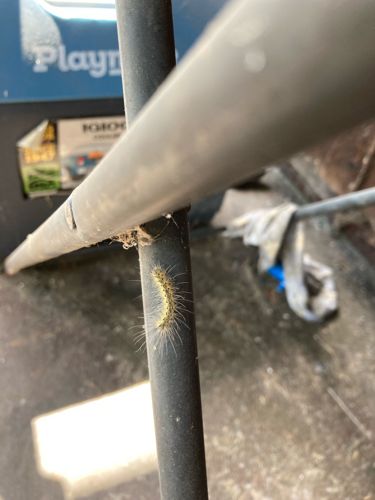Fall Webworm
Scientific Name: Hyphantria cunea
Order & Family: Lepidoptera, Erebidae
Size: Larvae (caterpillars) typically grow to 1 to 1.5 inches (2.5 to 3.8 cm) in length.

Natural Habitat
Deciduous trees and shrubs, particularly in orchards, urban areas, and forests across North America, Europe, and Asia.
Diet & Feeding
The larvae are polyphagous defoliators, feeding on the leaves of a wide variety of deciduous trees, including pecan, walnut, persimmon, apple, cherry, and maple.
Behavior Patterns
Fall webworms are known for constructing large, silken webs that enclose foliage, where the caterpillars feed and live communally. They hatch from eggs laid in clusters on leaves, and the young larvae begin constructing their web immediately. As they grow, they expand the web to encompass more foliage. They undergo several instars within the web before pupating in the soil or in sheltered locations. There can be one to four generations per year depending on the climate.
Risks & Benefits
Potential risks include defoliation of host trees, which can reduce aesthetic value, yield in fruit trees, and in severe cases, weaken trees. While not directly harmful to humans (their hairs can cause mild irritation in sensitive individuals), large infestations can be a nuisance. They provide a food source for birds and parasitic insects, and outbreaks can be part of a natural ecological cycle.
Identified on: 9/19/2025